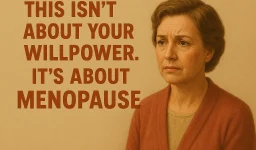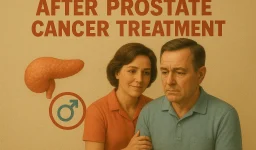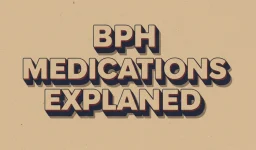Key Facts
- It’s shockingly easy for a simple medicine mistake to become a serious problem for our loved ones.
- That risk multiplies with every bottle and pillbox you add to what I affectionately call the “medicine cabinet jungle.”
- I say this a hundred times a day: treat the instructions from your doctor or pharmacist like they’re sacred.
- And yes, that glass of wine can turn your medication into a very bad dance partner. Mixing them, especially things like opioids, is a huge risk.
- When in doubt, don’t wait. An overdose is a “call for help now” situation, not a “let’s see how it goes.”
On this page:
So, what are we *really* talking about?
Let’s be honest, the modern medicine cabinet can look like a failed science experiment. There are bottles for sniffles, creams for rashes, and pills for aches we can’t even remember having. In my work with new parents, I see the overwhelm every day as they try to juggle their own needs with their baby’s. It’s a lot.
An accidental overdose isn’t some dramatic plot point from a TV show. It’s usually just a mistake. A simple, quiet error—like taking the wrong pill in the middle of the night—that turns something helpful into something harmful. The reason I’m so passionate about this is that we have the power to prevent these situations just by knowing what to watch out for.
The Common (and Sneaky) Traps to Avoid
Trust me, these happen to the best of us. It’s rarely one big mistake, but a series of little ones. Here are the classics:
The “But It’s a Different Box!” Trap
You’ve got Brand X for your headache and Brand Y for your flu symptoms. They look totally different. Surprise! They’re both powered by paracetamol. You’ve just accidentally taken a double dose. This is the number one mix-up I see.
The “Super-Duper Strength” Surprise
You grab the familiar box of medicine you always get, but you miss the tiny “Max Strength” or “24-Hour” banner on the front. Suddenly, that one little pill packs a much bigger punch than you were prepared for.
The “Just a Little Spoonful” Fiasco
Oh, this one is a classic for parents of young children. That cute little spoon from your silverware drawer is not a medical instrument. The difference between a real teaspoon and the specific oral syringe that comes with the medicine can be a dangerously large amount for a tiny body.
The “Toddler Treasure Hunt” Danger
Kids are explorers, and to them, colorful pills look like candy. They can find a dropped pill faster than you can find your keys. A bottle left on the counter for “just a minute” is an open invitation for a terrifying treasure hunt.
Warning Signs You Cannot Ignore
Okay, the humorous part is over for a moment, because this is critical. If you see these signs, you need to act immediately. No hesitation. This is when you call 911 or your local emergency number.
In an adult, look for:
- Sudden confusion, extreme drowsiness, or agitation.
- Skin that’s cold and clammy to the touch.
- A blueish color on their lips or fingertips.
- Pupils that have shrunk to the size of a pinpoint.
- A seizure of any kind.
- Being unresponsive. If they are snoring or making gurgling sounds, this is a major red flag that their airway is at risk.
In a child, the signs might be:
- Vomiting when they haven’t been sick.
- Being unusually sleepy or very hard to wake up.
- Symptoms that look like a severe allergic reaction (anaphylaxis).
The Medications on My “Extra Careful” List
While any medicine can be dangerous in the wrong amount, these groups are responsible for the most serious overdose situations.
Opioids: Strong prescription pain relievers. The risk skyrockets when mixed with alcohol or even some antidepressants.
Paracetamol: Our trusty, everyday pain reliever is also a leading cause of liver damage from overdose, partly because it’s in so many different products.
Diabetes Medicines: For someone with diabetes, an extra dose of insulin can be life-threatening. And for someone *without* diabetes, taking it is extremely dangerous.
Okay, It Happened. What Now? Your Emergency Plan.
First, take a deep breath. You’ve got this. If you suspect an overdose and the person is unconscious, having a seizure, or struggling to breathe, your course is clear:
- Call 911 or your local emergency number. Right now.
- Stay on the phone and follow their instructions.
- If you know what they took, grab the bottle to show the paramedics. Don’t waste time hunting for it if you’re not sure.
- Gently roll them onto their side while you wait.
If the person is awake and seems okay, but you realize they took the wrong dose, call the Poison Control Center hotline (1-800-222-1222 in the US). They are calm, they are experts, and they will tell you exactly what to do.
Taming the Medicine Cabinet for Good
Ready to bring some order to the chaos and get your peace of mind back? It’s all about creating simple, unbreakable habits.
- Channel your inner detective: Read the “Active Ingredients” on every single box. Make it a game. This is your superpower against accidental double-dosing.
- Keep a “who’s-taking-what” list: A simple note on your phone or fridge can save you. List all meds for each person, including vitamins.
– The Lockbox is Your Best Friend: If you have kids, this is non-negotiable. All medicines live in a high, locked cabinet. Period.
- Never Share Prescriptions: Your prescription is tailored to you. It’s not a one-size-fits-all solution and can be dangerous for someone else.
It’s not about being a perfect parent or caregiver; no one is. It’s just about being a prepared one. A few good habits are all it takes to make your home a whole lot safer.



